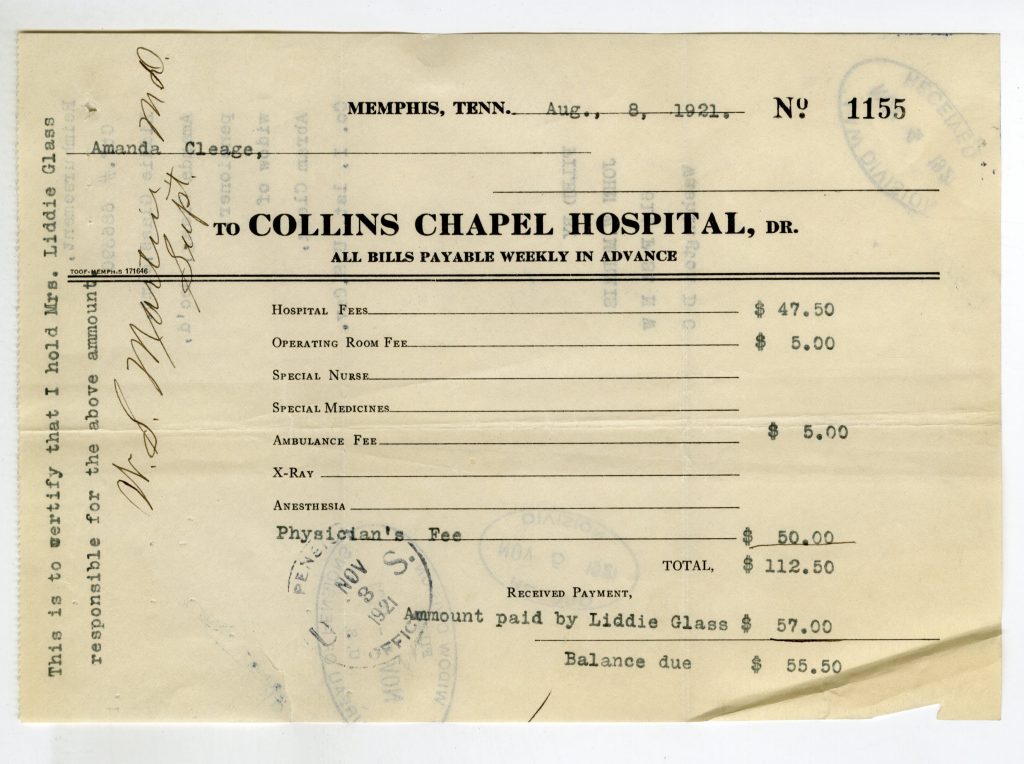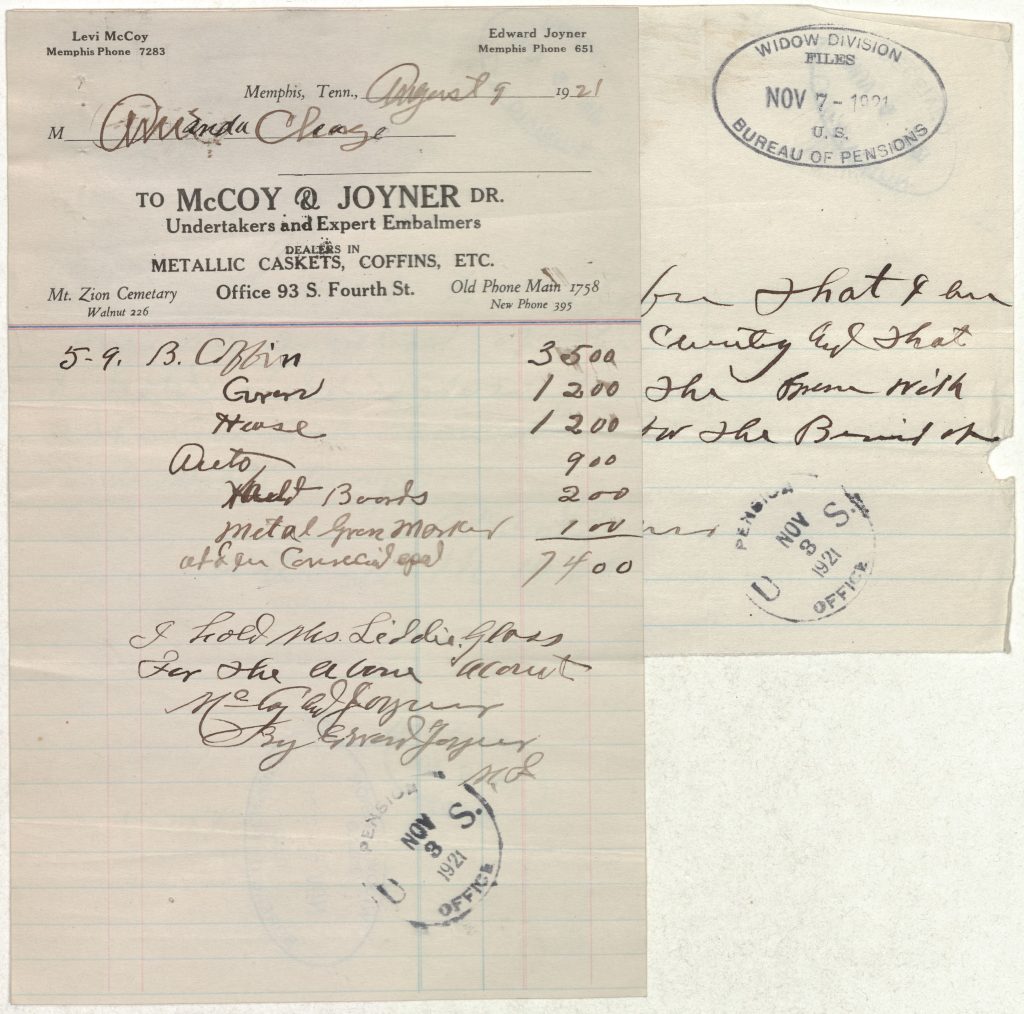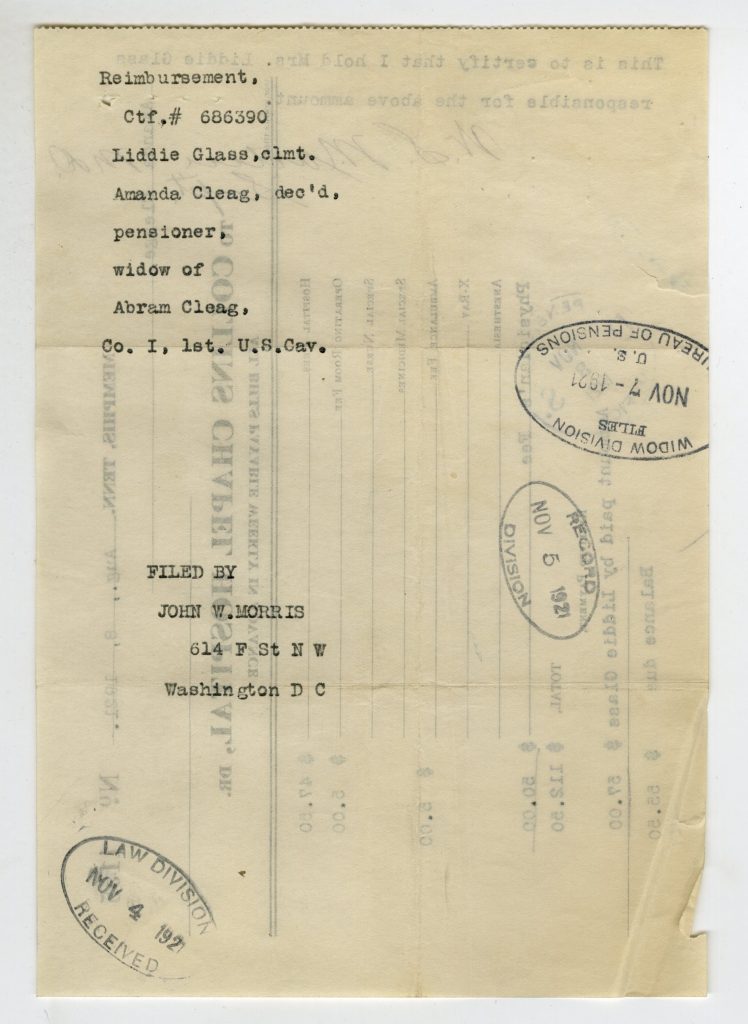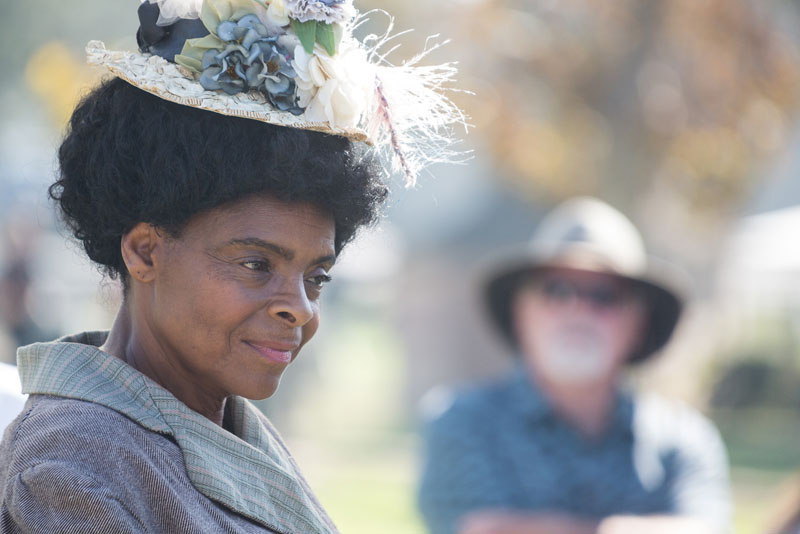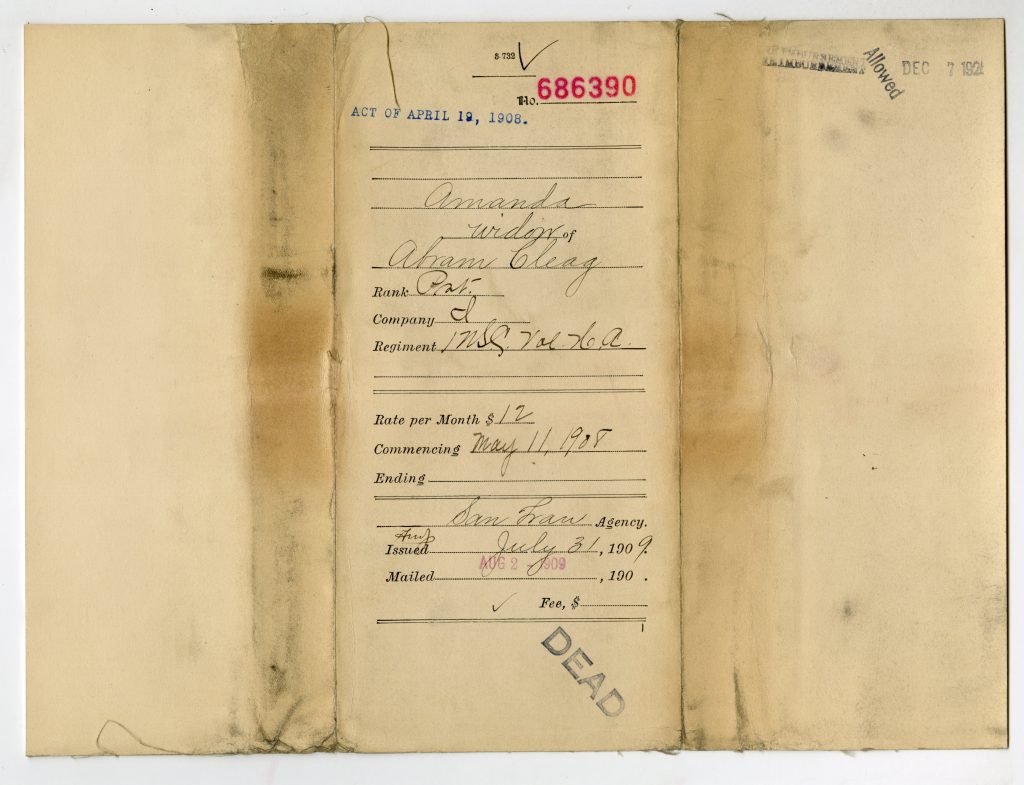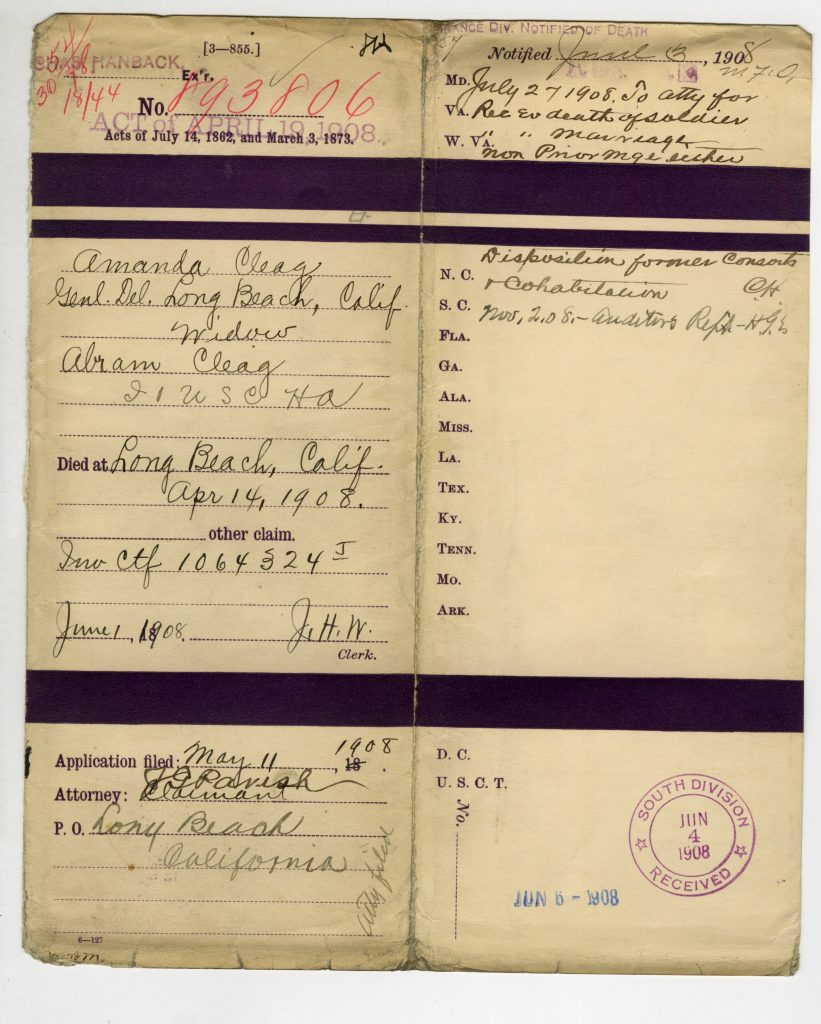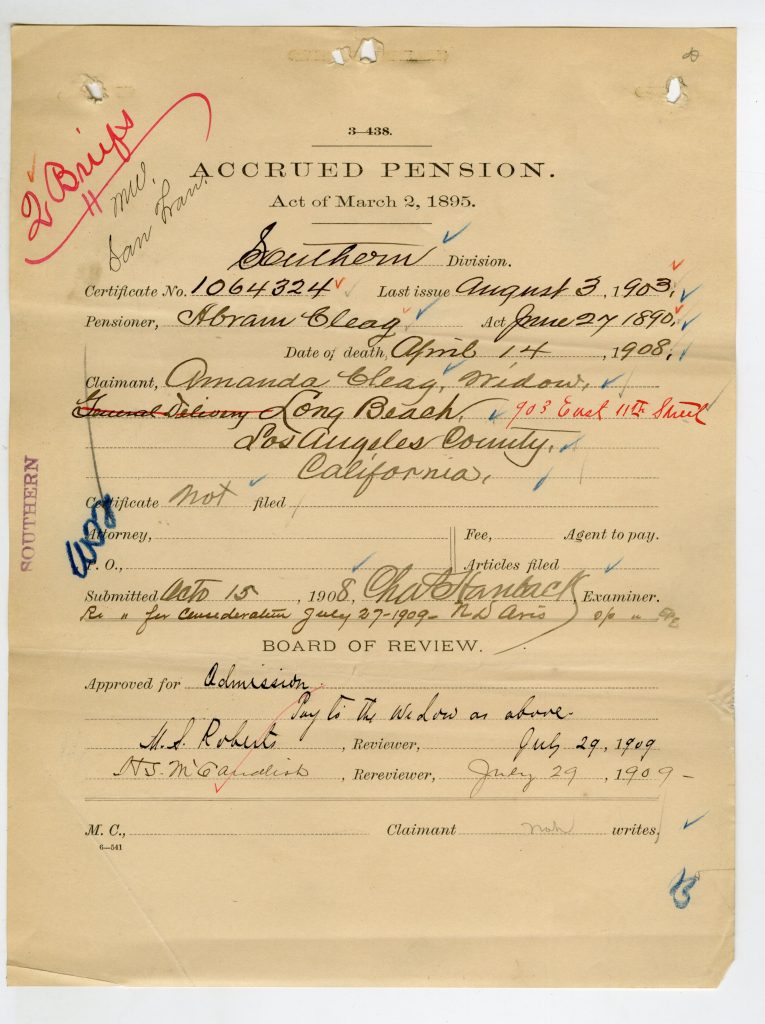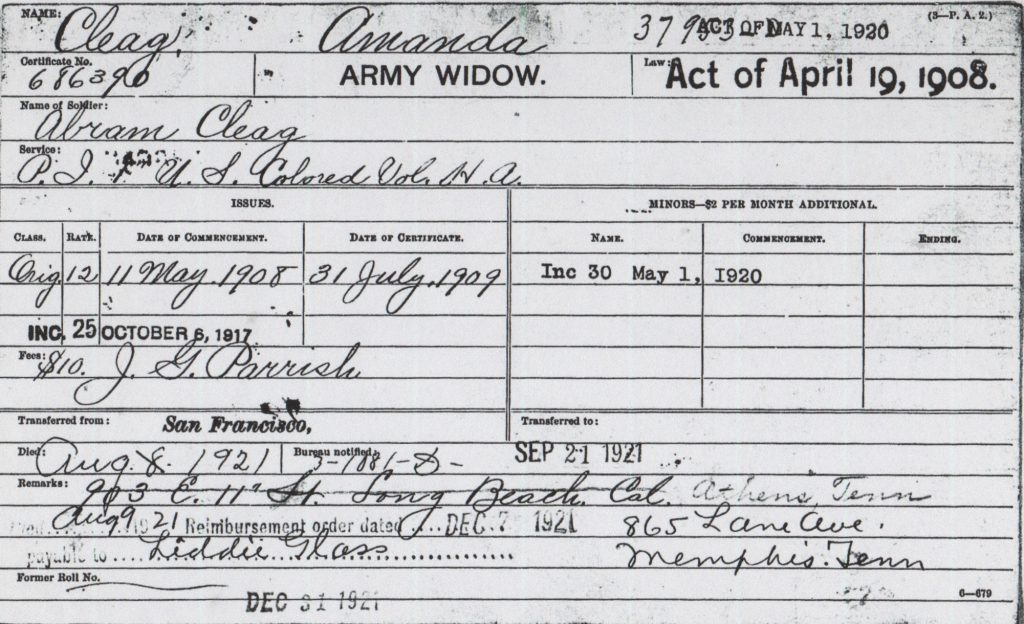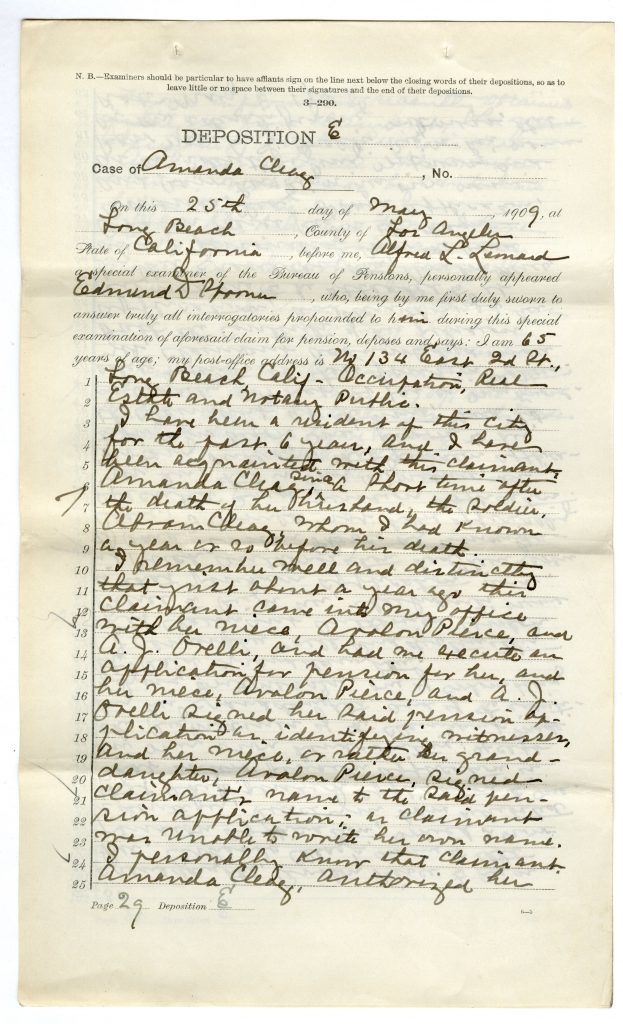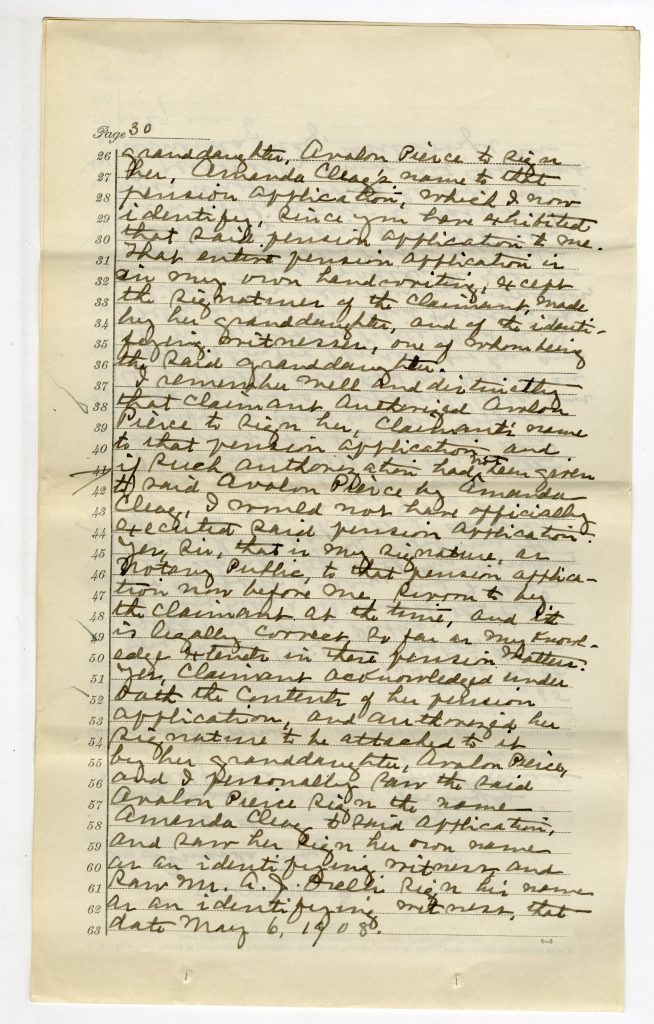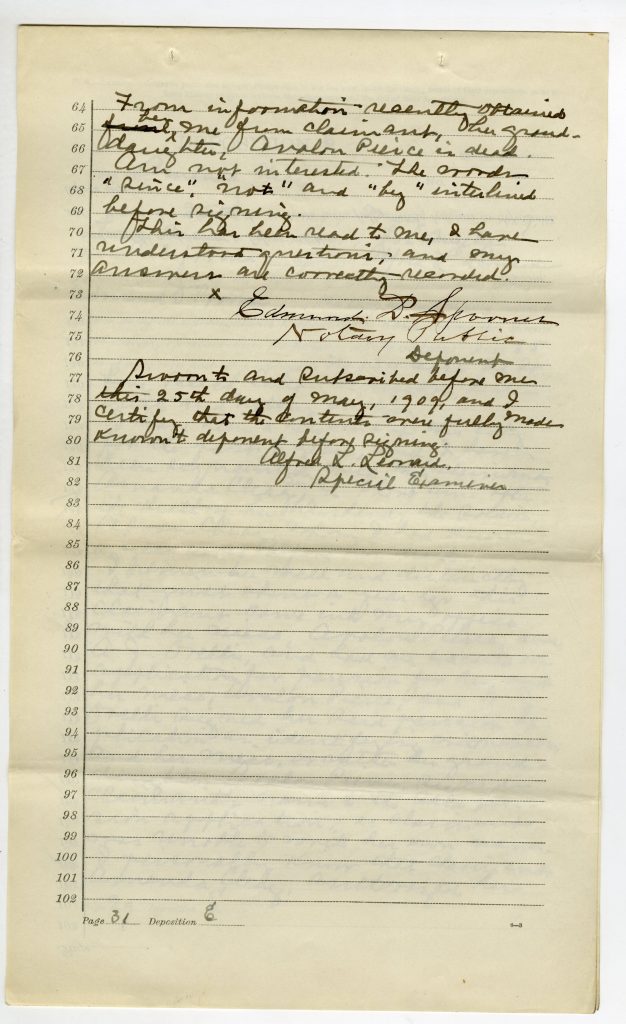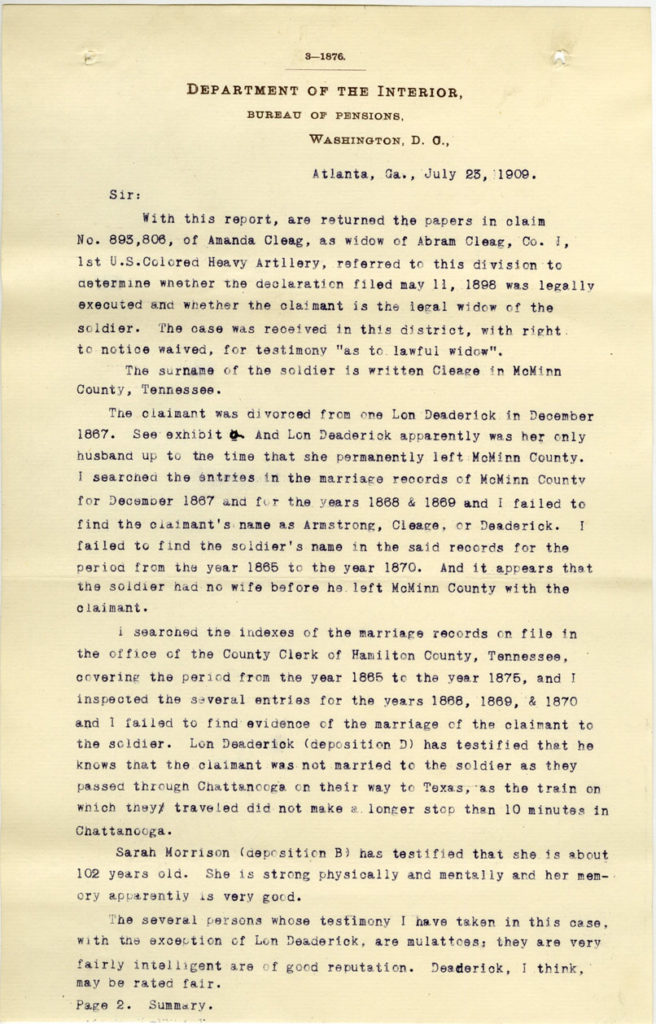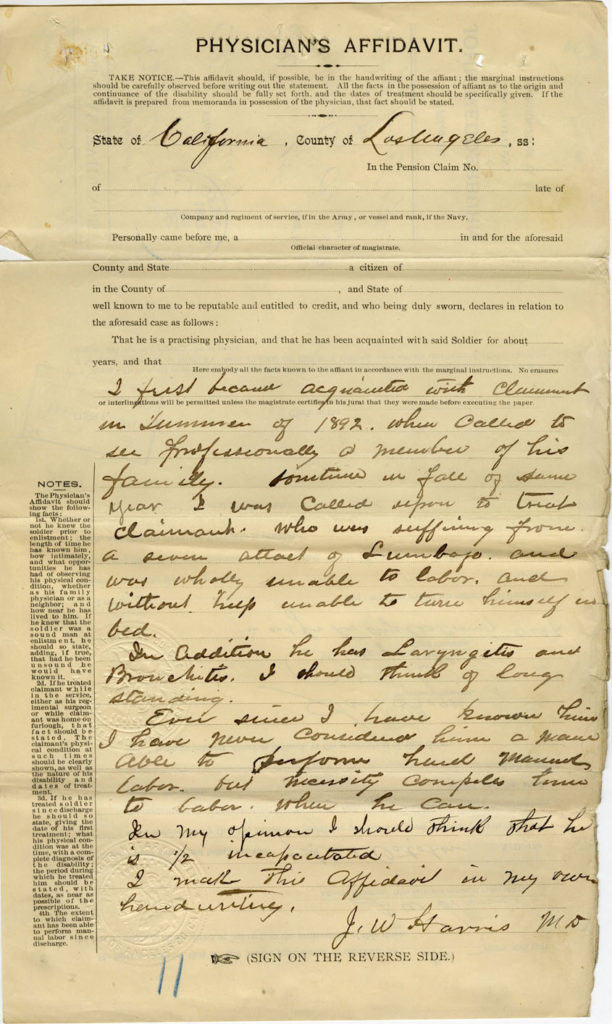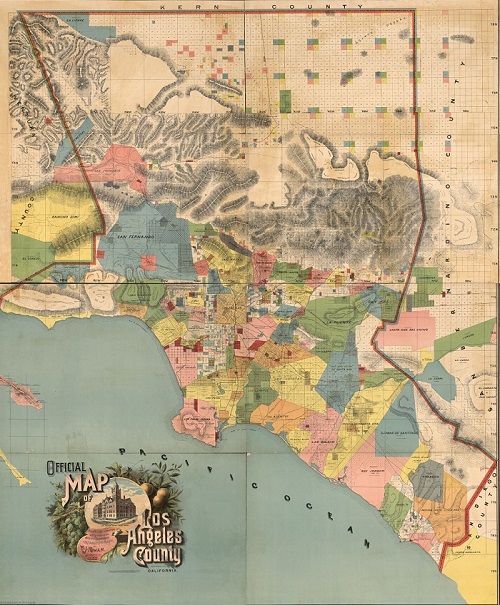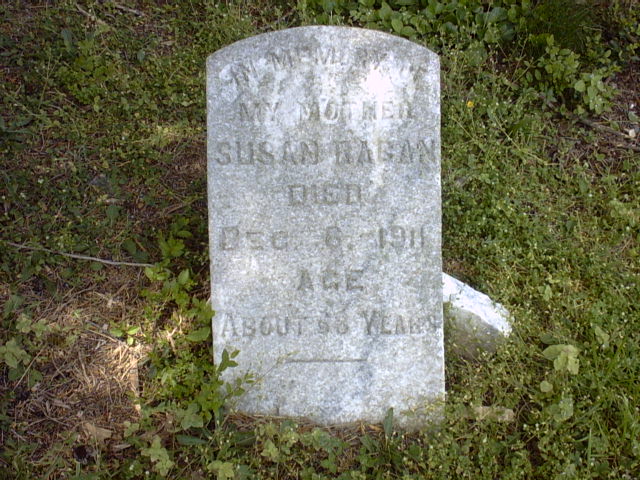Amanda’s sister Liddie helped her during her injury, hospitalization and handled the burial details. She wrote to the government to be reimbursed for the money she had spent. She did receive it.
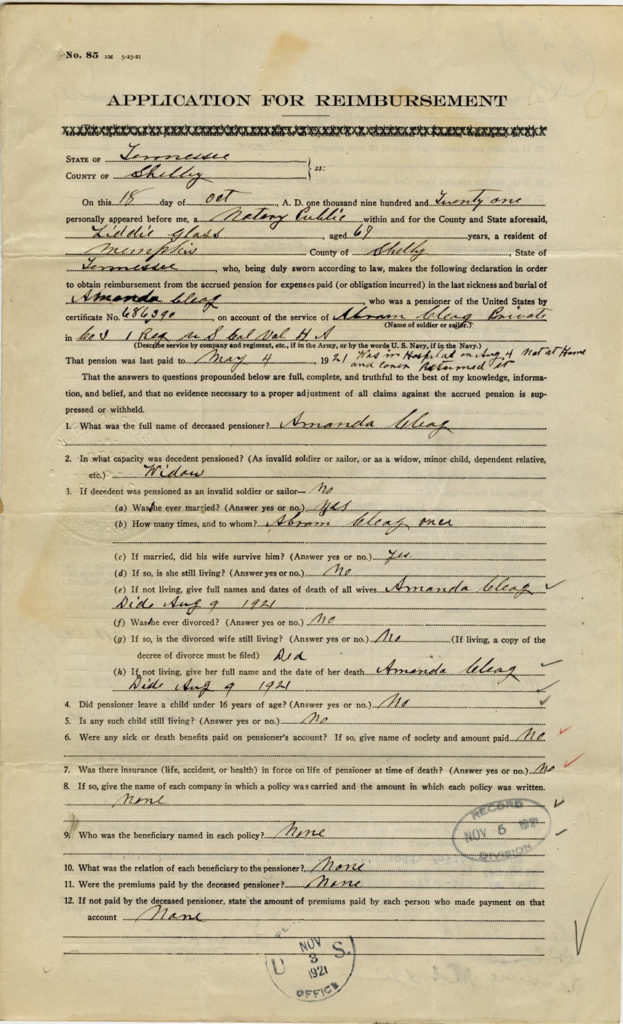
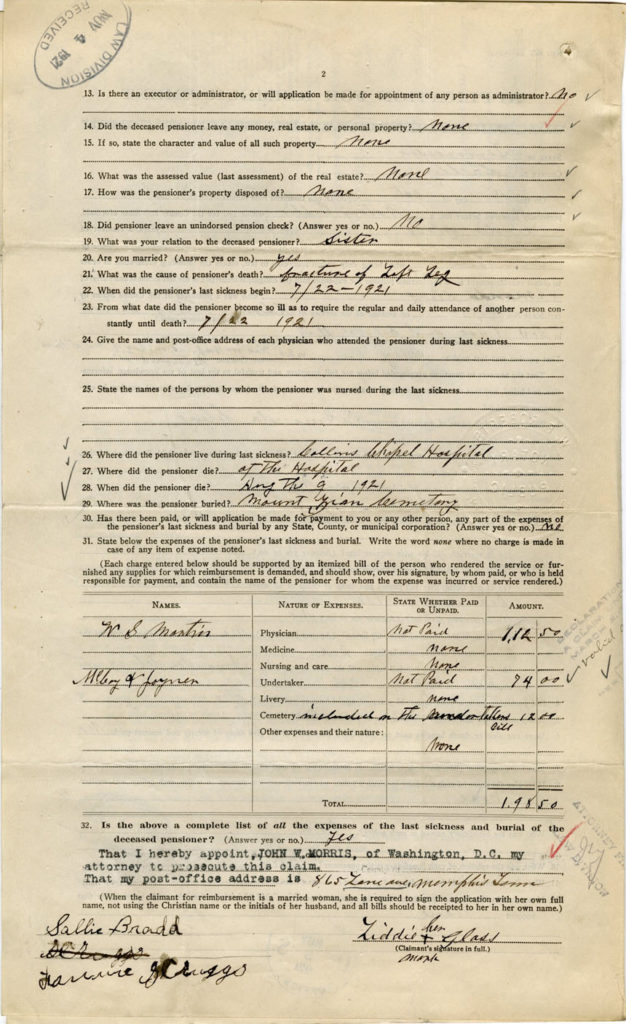
Application for Reimbursement
State of Tennessee
County of Shelby
On this 18 day of Oct 1921
Liddie Glass, age 67 years, a resident of Memphis county of Shelby, state of Tennessee, who, being duly sworn according to law, makes the following declaration in order to obtain reimbursement from the accrued pension for expenses paid (or obligation incurred) in the last sickness and burial of Amanda Cleag, who was a pensioner of the United States by certificate No. 686390 on account of the service of Abram Cleag private in Co. I 1 Reg U. S. Col vol H. A.
That pension was last paid to May 4, 1921 Was in hospital on August, 4 not at home and couldn’t return it.
1. What was the full name of deceased pensioner? Amanda Cleag
2. In what capacity was deceased pension? Widow
3 If deceasent was pensioned as an invalid soldier or sailor – No
a. Was s/he ever married? yes
b. How many times and to whom? Abram Cleag. Once.
c. If married, did his wife survive him? Yes
4. Was there insurance? No
14. Did the deceased pensioner leave any money, real estate or personal property? No.
18. Did pensioner leave an unendorsed pension check? No
19. What was your relation to the deceased pensioner? Sister
20. Are you married? Yes
21 What was the cause of pensioner’s death? Fracture of left leg.
22. When did the pensioner’s last sickness begin? 7/22 – 1921
26. Where did the pensioner live during last sickness? Collins Chapel Hospital
27. Where did the pensioner die? At the hospital
28. When did the pensioner die? August the 9, 1921
29. Where was the pensioner buried? Mount Zion Cemetery
30. Has there been paid, or will application be made for payment to you or any other person, any part of the expenses of the pensioner’s las sickness and burial by any State, County, or municipal corporation? No
31. State below expenses
W.S. Martin physician – not paid $112.50
Medicine none
Nursing care none
McCoy & Joyner Undertaker – not paid $74.00
Livery none
Cemetery $12.00
Other expenses none
Total $198. 50
32. Is the above a complete list of all the expenses of the last sickness and burial of the deceased pensioner? Yes
Sallie Bradd
Fannie Scruggs
Liddie (her X mark) Glass
Statement of doctor
Reimbursement
Claimant Liddie Glass
Pensioner Amanda Cleag Widow
Rate $30. Last paid to June 4, 1921 at $30
Last illness commenced July 22, 1921 Date of death August 9, 1921
Accrued pension $66
Physicians bill $112.50
Undertakers bill $74.00
Total $186.00
Click link to read more about Lydia Cleage Glass
